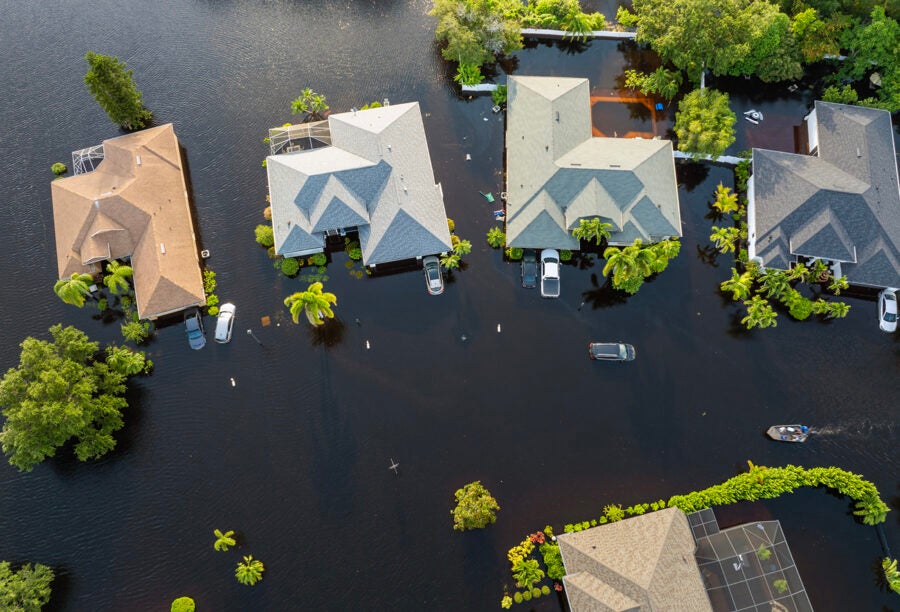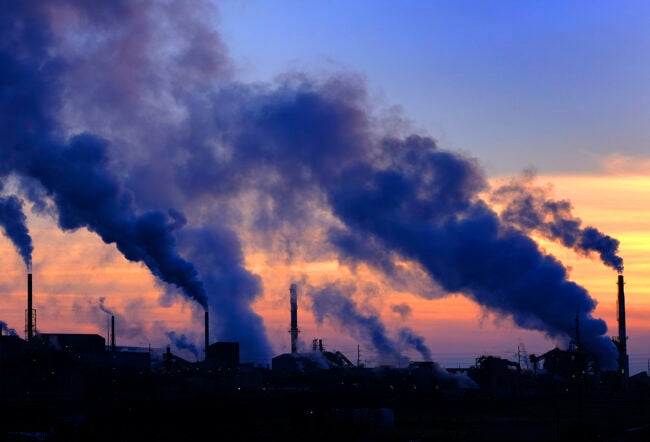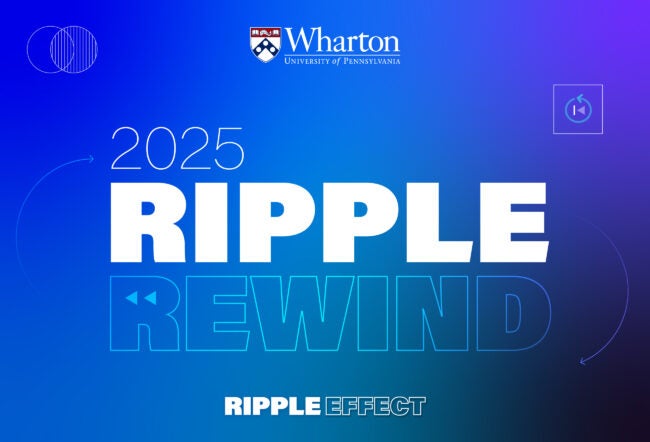Property insurance premiums for U.S. homeowners surged an average 33% or $500 annually from $1,902 in 2020 to 2,530 in 2023, driven largely by pass-through of higher reinsurance costs. That insight comes from a new research paper titled “Property Insurance and Disaster Risk: New Evidence from Mortgage Escrow Data” by Benjamin Keys, Wharton professor of real estate and finance, and Philip Mulder, professor of risk and insurance at the University of Wisconsin-Madison.
Those premiums were higher especially in areas exposed to climate risks, such as hurricanes and wildfires. Home prices and disaster risk explain most of the variation in insurance premiums, but they also vary across incomes and socioeconomic status. For instance, lower-income areas see much higher premiums as a share of income, and zip codes with larger nonwhite population shares pay higher premiums after conditioning on disaster risk and income.
The stakes are high at the other end as well: U.S. insurers collected $133 billion in gross premiums for homeowners insurance products in 2022, the paper stated, citing the latest data from the Insurance Information Institute.
“You see a staggering increase in insurance premiums … [which is] much faster than the rate of inflation,” Keys said in a recent episode of the Wharton Business Daily radio show on SiriusXM. (Listen to the full podcast here.) “One of our big takeaways is that there has been a sharp increase in the cost of living in harm’s way over the last few years. Climate risk is being translated into the cost of living in risky areas.”
Premium increases are 90% higher in Florida and 50% higher in Texas under 2023 insurance costs relative to 2018 insurance costs, the paper stated. “[The higher premiums] are the canary in the coal mine for a lot of homeowners living in risky areas trying to think through what to do,” Keys said. Premiums in disaster-prone zip codes primarily increased in states exposed to reinsurance markets, while increases were more modest in less exposed states, the paper noted.
The Reinsurance Dynamic
Reinsurance costs have doubled between 2017 and 2023. The paper attributed that to factors including inflation, a “climate epiphany” as reinsurers reassess climate exposure, increasingly concentrated disaster exposure, and the end of a low-interest rate environment that led to a capital crunch, the paper noted. “Reinsurance prices provide an important window into the cost of insuring risks that are expected to increase with climate change,” the researchers wrote.
Homeowners insurance providers secure reinsurance from global companies like Swiss Re or Munich Re to offset concentrated disaster risks that they might face, Keys said. “An insurance company that has a lot of policies in New Orleans, for instance, could be wiped out if New Orleans is hit with another Hurricane Katrina-type disaster.”
“There has been a sharp increase in the cost of living in harm’s way over the last few years. Climate risk is being translated into the cost of living in risky areas.”— Benjamin Keys
If reinsurance costs stay high, then average property insurance premiums would be expected to increase by an additional $700 for the top 5% of homeowners exposed to climate risk by 2053, the paper predicted. That estimate should be considered a lower bound, as it assumes that reinsurance frictions do not get worse, that insurers continue to offer policies in risky areas, and that regulations continue to cross-subsidize risks; it also does not account for climate impacts on disaster risks besides hurricanes and wildfires. However, if the reinsurance markets revert to their 2018 prices, climate change would increase the average annual premiums of climate-exposed homeowners by only $480, the paper noted.
The reinsurance market is extremely liquid, and it can reprice very quickly in response to changes in its business environment, Keys said. But the implications of higher property insurance premiums for housing markets will be more gradual because houses are durable and most people don’t move homes in any given year, he added. “But most obviously, this should be setting off alarms to say, ‘Let’s not build any more durable housing in those most risky areas.’”
Sharpening the Climate Risk Debate
The paper provides the first estimate of the relationship between disaster risk and premiums in expected disaster losses. The researchers were able to achieve that with granular data on the monthly payments that mortgage borrowers make into escrow accounts, which are distributed across mortgage principal, interest, local property taxes, and insurance.
A one standard deviation increase in expected disaster losses is associated with a $450 increase in average premiums.
The paper also breaks new insights it brings into private insurance market pricing and its relationship with the cost of capital in secondary markets. It is also relevant to understanding the price signals reaching climate-exposed homeowners.
According to Keys, the paper raises questions around how homeowners and communities could adapt to the higher premiums. “The next wave of research that builds on this agenda is to understand the ramifications of these increases in insurance premiums,” he said. “Will it lead to distress in the mortgage market? Will we see a lot of mortgage defaults, potentially prepayments, as people try to move away? What are the consequences on asset values? What happens to home prices when there’s this higher cost of using the house each year? The higher insurance premiums should ultimately be capitalized into house prices.”



